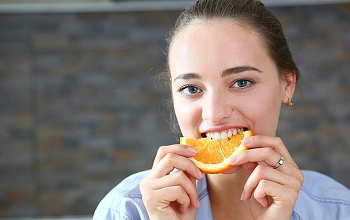Oranges, grapes and carrots may contain cancer-fighting compounds that closely resemble those used in licensed drugs, research suggests.
A study found that out of more than 7,900 molecules within fruits and vegetables, 110 have the potential to battle tumours, according to Daily Mail.
This was based on the molecules’ likeness to compounds found in existing anti-cancer medications.
Fruits and vegetables are rich in antioxidants called flavonoids, which give them their colour.
Flavonoids may help prevent cancer by suppressing inflammation, controlling cell replication and even inducing tumour ‘suicide’.
Researchers, from Imperial College London, hope to one day create ‘personalised food passports’ that act as ‘gastronomic medicine’ to reduce our risk of disease.
The research was led by Dr Kirill Veselkov, of the department of surgery and cancer at Imperial.
More than one-and-a-half million people are expected to be diagnosed with the disease.
But past research suggests up to 30-to-40 per cent of cancers could be prevented by living a healthy lifestyle.
Eating lots of fruits and vegetables could be particularly beneficial due to them being rich in cancer-fighting antioxidants.
To uncover which produce reduces our cancer risk the most, the scientists ‘fed’ 7,962 biologically-active molecules into an algorithm.
The algorithm was ‘trained’ to recognise the properties of 199 approved cancer drugs.
After stimulating how the bioactive molecules act in a human body, the algorithm predicted 110 had cancer-fighting properties.
The fruits and vegetables with the most cancer-fighting properties were:
• ‘Sweet’ oranges
• Grapes
• Carrots
• Cabbage
• ‘Wild’ celery
• Coriander
• Dill
•Tea
Sweet oranges, which are thought to have originated in Southeast Asia, are particularly rich in the flavonoid dydimin.
Dydimin is also found in the herbs coriander and dill.
And tea was found to ‘strongly exhibit anti-cancer drug-like properties’. This is thought to be due to it being a rich source of the molecules catechins, terpenoids and tannins.
These three compounds ‘exert strong and complementary anti-cancer effects’ by reducing DNA damage, suppressing inflammation and inducing cancer cell suicide.
‘Food represents the single biggest modifiable aspect of an individual’s health,’ the researchers wrote.
‘The machine-learning strategy described here is a first step in realising the potential role for “smart” nutritional programmes in the prevention and treatment of cancer.’
The researchers hope their findings will one day be adapted to suit the dietary needs of other complex diseases, such as diabetes.
‘We envisage this first list of ‘cancer-beating’ foods will serve as one of the pillars in the foundation for the future of gastronomic medicine,’ the researchers wrote.
‘It should aid the creation of personalised “food passports” to provide nutritious, tailored and therapeutically-functional foods for the population.’
The researchers add, however, ‘significant future work’ is required to uncover how much of these ‘hyperfoods’ we should be eating, as well as how they should be stored, processed and cooked.
N.H.Kh

